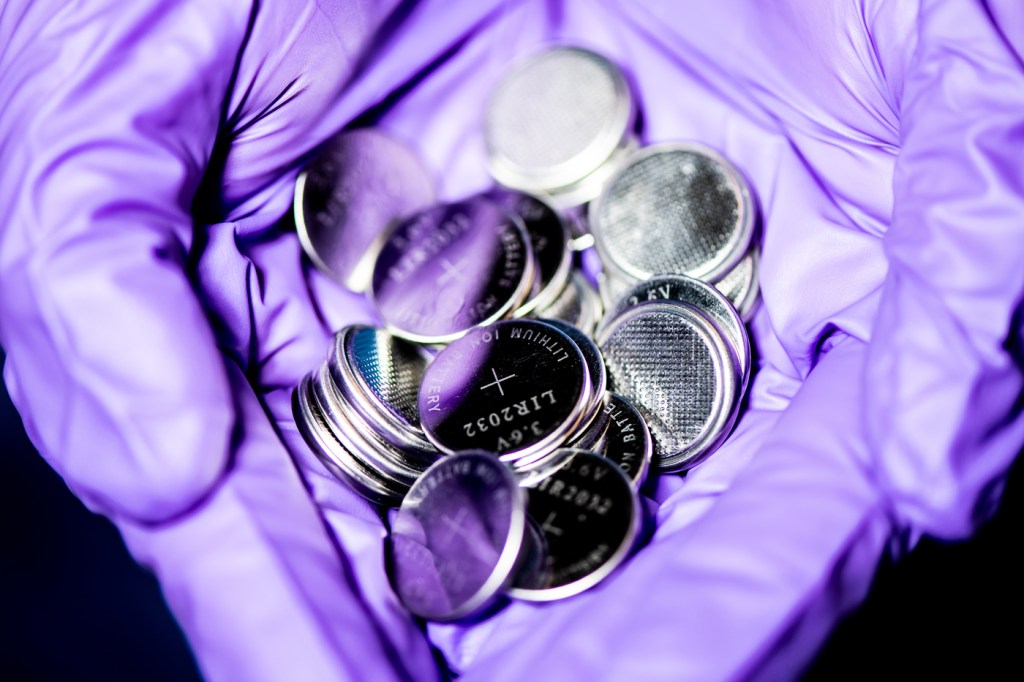What goes on inside the battery of your iPhone at the sub-atomic level?

Ever wondered what goes on inside the battery of your iPhone—how it stays charged for as long as it does and, conversely, why it suddenly dies in the middle of that important phone call?
Researchers at Northeastern, led by physicist Arun Bansil, have been curious for years. And even though a lot is known about how atomic and subatomic particles inside lithium-ion batteries—among the most common battery types used worldwide—behave, such behavior is hard to see, or visualize.

Arun Bansil, university distinguished professor of physics in the College of Science at Northeastern. Photo by Ruby Wallau/Northeastern University
And having a picture of the inner workings of these lithium-rich batteries not only helps scientists understand what’s actually going on at the sub-atomic level, but it may lead to improvements of the materials used in batteries, and better designs for future battery technologies. As it is the case that modern technological society is becoming less reliant on gasoline-based fuel and, in turn, more dependent on battery power, the demand for cheaper, safer and more efficient batteries has never been higher.
As it turns out, there aren’t really any tried-and-true methods for looking inside a battery at the atomic level—to visualise, so to speak, its electrochemical processes, like oxidation-reduction, or the redox mechanism, which researchers say is integral in the creation of the battery’s charge.
“That has been a real challenge in the field,” said Bansil, the self-described “battery doctor.” “What we have done here, in simple terms, is that we are able to image the working battery to actually see what’s going on inside it. Literally—it’s about seeing what’s happening with the different orbitals in the cathode, what happens when they’re charged, what happens when they are discharged.”
As a metal, lithium by nature tends to lose electrons easily, making it a suitable material for a battery. To oversimplify the process: lithium-ion batteries work because of the movement of lithium ions. The ions—atoms that have either gained or lost an electron—move in one direction when the battery charges, or when absorbing power, then move in the opposite direction during discharge, or when supplying power.
“The result is you then have currents flowing within and outside the battery,” says Bansil, who is university distinguished professor of physics at Northeastern.
The redox mechanism involves this transfer of electrons inside the battery cell. But, Bansil says, the real question is how oxygen atoms influence the whole process. When lithium interacts with oxygen, an oxide is formed.
A better understanding of how these oxides work at the atomic scale is what scientists have been after, which is precisely what Bansil and his team set out to observe. Their findings were published this month in Nature, marking the first time this oxygen redox process has been observed inside a Li-ion battery.
Other institutions involved in the research include Carnegie Mellon University, Lappeenranta-Lahti University of Technology in Finland, as well as Gunma University, Japan Synchrotron Radiation Research Institute, Yokohama National University, Kyoto University, and Ritsumeikan University.
What the researchers were able to produce is the first tomographic reconstruction of this subatomic symphony using a technique that has been refined over decades called Compton scattering. The technique involves directing a high-energy X-ray at the battery; the photon particles that makeup the light then “scatter” when they interact with the electrons, thus producing results that can be measured scientifically and, therefore, observed.
But you don’t get a clean, visible picture of the atomic activity in much the way a doctor can see an X-ray image of some part of a patient’s body on a radiograph, Bansil says. Instead, what is produced is “scattering data,” which researchers then turn into insights about the whole internal battery process.
“Just like a doctor will take the X-rays of a patient, we are similarly using these X-rays to ‘image,’ if you like, the atomic-level behavior of these batteries—which atomic orbitals are involved in this charging-discharging process,” Bansil says.
Bansil says the data could theoretically be used to determine whether a battery is, in simple terms, properly charged, or to assess the battery’s “state-of-charge” (the amount of energy available at a given point). The snapshot provides scientists with a guide from how to better optimize battery materials, Bansil says, a way of illuminating the infinitesimally small, particle-laden reality.
Really what’s now needed. Bansil says, is something of a “paradigm shift,” and the ability to penetrate into an enclosed lithium battery cell and reconstruct the actual exchange of particle activity represents a significant step forward in the study of future battery technology.
For media inquiries, please contact media@northeastern.edu.





